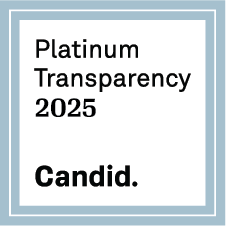Poverty Mapping with an OpenStreetMap Base in Sumbawa
Posted by Kate Chapman • Dec. 2, 2011
During HOT's time working in Indonesia we've met with many different groups doing different types of mapping. One of the more common types is poverty mapping. This week we returned to Sumbawa for the third time to work with groups from Dompu and Bima.
The first time we were on Sumbawa in June was to teach the basics of OpenStreetMap as part of our pilot program with the Australia-Indonesia Facility for Disaster Reduction (AIFDR). Here we were working with Australian Community Development and Civil Society Strengthening Scheme (ACCESS) and their partners. Everyone was excited after this first two day workshop, but the need for more hands-on and practical knowledge was needed. Jeff Haack and myself returned in August each to work separately with a group on the goal of mapping an entire village. The four days of hands-on work got everyone very comfortable with mapping and near the end we discussed further possibilities. It was interesting to return again this week and see where the groups had taken them. Each group had taken their mapping even further but in different ways.
SOLUD is an ACCESS partner and a local Non-Governmental Organization (NGO) in Bima, they were primarily concerned about health data. Much of the data however could not be uploaded into OpenStreetMap. Since we had left the last time they had begun making their own presets in JOSM (xml files that configure forms for editing). In these presets were health indicator data for households. Once the data was added it was saved as an OSM file and then imported into QGIS,files were shared between individuals on USB sticks. Our goal in this training was to help create a more robust data collection strategy. One of the major points that came out of our previous training was the need for a way to link private data to public OpenStreetMap data, so we were prepared for that.
 Training in Bima (Picture Thanks to Ramecindiha Dedy)
Training in Bima (Picture Thanks to Ramecindiha Dedy)
During our two day training we focused on two things. The first was using Quantum GIS to create maps and perform analysis of the data that was already collected. One component of this was taking a spreadsheet with OpenStreetMap ID's and linking it to a shapefile downloaded from GeoFabrik's download site.This allowed thematic mapping of individual buildings by indicators. For example in the spreadsheet was listed those families receiving "rice for the poor." This cumbersome workflow allowed us to end up with the specific type of map we wanted at the end, but was labor intensive.
After going through the process and showing what was possible with the data we introduced the private datastore. This was to show how workflows could be improved if the linking process was made more easily. We created a form with the indicators they were interested in using. Next it will be key to create useful downloads of data of the private data they are collecting. Additionally after going through both of these lessons we also showed how to link pictures to information.
Our second stop in Dompu had much of the same questions and issues. They had come up with a completely different way to get around the problems though. First they mapped all the buildings and roads in OpenStreetMap, next they manually took screenshots of the data and imported it into Corel Draw. Once the map was in Corel Draw they traced over all the buildings and colored them based on their poverty level. With this method they were redo'ing a lot of work. This group had begun using QGIS some by manually typing all the IDs from OpenStreetMap into their Excel files. They had already done this for the entire village of Lanci Jaya (the one that Jeff worked with them to map in August). The main goal of this workshop was to use QGIS instead of Corel Draw to create a poverty indicator map. This way as the data is updated it could automatically update the map.
Now with a better workflow more analysis and decisions can be made. I can't wait to see the results as we progress.
 Training in Dompu (Picture Thanks to Emir Hartato)
Training in Dompu (Picture Thanks to Emir Hartato)







